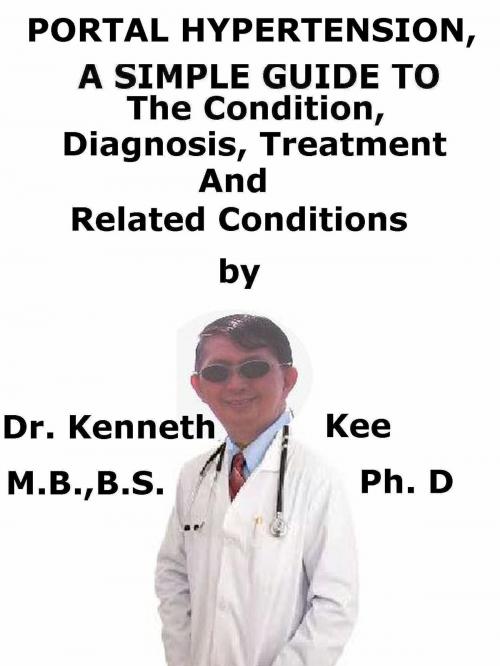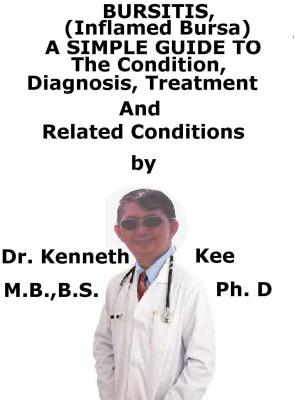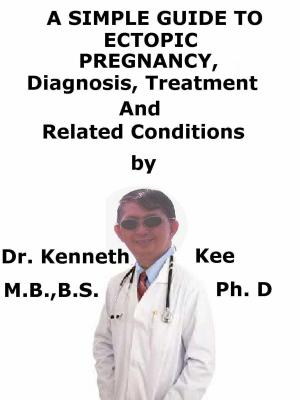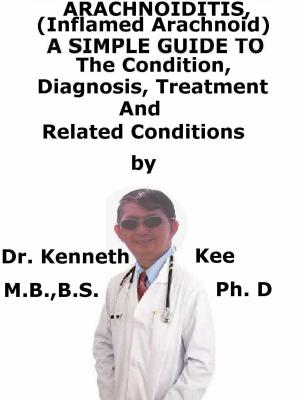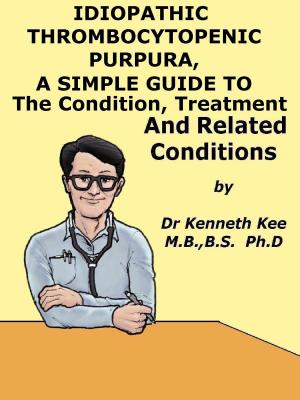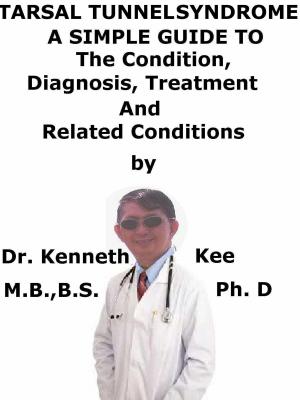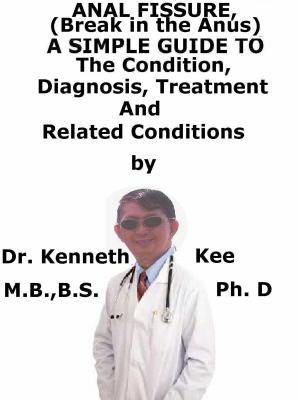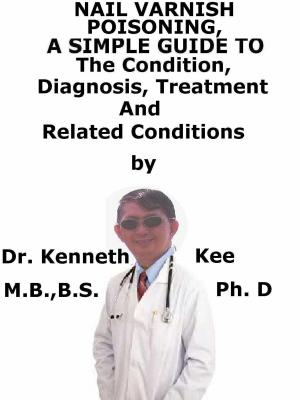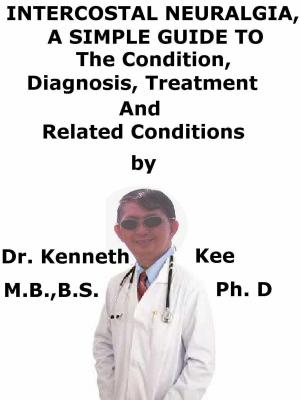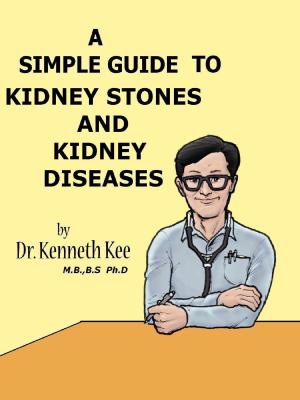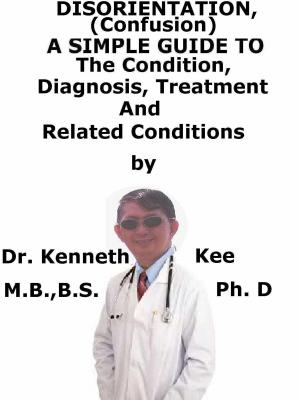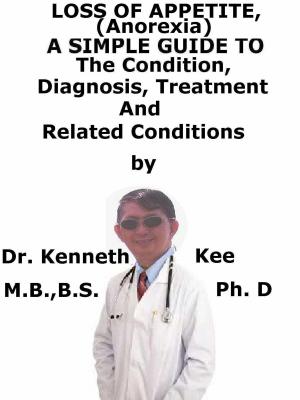Portal Hypertension, A Simple Guide To The Condition, Diagnosis, Treatment And Related Conditions
Nonfiction, Health & Well Being, Health, Ailments & Diseases, Abdominal, Medical| Author: | Kenneth Kee | ISBN: | 9781370747481 |
| Publisher: | Kenneth Kee | Publication: | January 29, 2018 |
| Imprint: | Smashwords Edition | Language: | English |
| Author: | Kenneth Kee |
| ISBN: | 9781370747481 |
| Publisher: | Kenneth Kee |
| Publication: | January 29, 2018 |
| Imprint: | Smashwords Edition |
| Language: | English |
This book describes Portal Hypertension, Diagnosis and Treatment and Related Diseases
Portal hypertension is the presence of abnormal high blood pressure in the hepatic portal vein.
Portal hypertension is defined as a portal pressure of 12 mm Hg or more (normal 5-10 mm Hg).
In the normal patient, free hepatic vein pressure (FHVP) is identical to inferior vena cava pressure.
FHVP is defined as an internal zero reference point.
Wedged hepatic venous pressure (WHVP) is the pressure gauged by inflating a balloon at the catheter tip, thus blocking a hepatic vein branch.
Measurement of the WHVP gives a close evaluation of portal pressure.
The hepatic venous pressure gradient (HVPG) is the difference in pressure between the portal vein and the inferior vena cava.
The HVPG is equal to the WHVP value minus the FHVP value (i.e., HVPG = WHVP - FHVP).
The normal HVPG is 3-6 mm Hg.
Portal hypertension is defined as a persistent rise of portal pressure above normal.
- An HVPG of 8 mm Hg is believed to be the threshold above which ascites potentially can develop.
- An HVPG of 12 mm Hg is the threshold for the possible formation of varices.
High portal pressures may prompt patients to a higher danger of variceal hemorrhage
Numerous disorders are related with portal hypertension with hepatic cirrhosis being the most frequent cause of this disorder.
The normal liver has the capability to contain large alterations in portal blood flow without large changes in portal pressure.
Portal hypertension happens from a combination of higher portal venous inflow and higher resistance to portal blood flow.
Patients with cirrhosis reveal higher splanchnic arterial flow and venous inflow into the liver.
Higher splanchnic arterial flow is thought to be partly by:
1.Reduced peripheral vascular resistance
2.Increased cardiac output in the patient with cirrhosis.
Nitric oxide appears to be the major driving force
Higher resistance across the sinusoidal vascular bed of the liver is produced by fixed factors and dynamic factors
Symptoms:
Symptoms of Budd-Chiari syndrome are due to reduced outflow of blood from the liver, with resulting hepatic congestion and portal hypertension
Diagnosis:
Check the patient's blood pressure and pulse with the patient in the supine and seated positions.
Signs of portosystemic collateral formation are:
a.Dilated veins in the anterior abdominal wall - May indicate umbilical epigastric vein shunts
b.Venous pattern on the flanks - May indicate portal-parietal peritoneal shunting
c.Caput medusae (tortuous paraumbilical collateral veins)
d.Rectal hemorrhoids
e.Ascites
Laboratory studies are directed towards investigating the causes of cirrhosis, which is the most frequent cause of portal hypertension.
The rate and volume of bleeding in the patient should be evaluated.
Measure the platelet count and prothrombin time (PT), send blood for renal and liver function tests (LFTs), and measure serum electrolyte levels.
Ultrasound, CT Scanning and MRI may show features suggestive of hepatic cirrhosis with portal hypertension
Upper Gastrointestinal Endoscopy is an essential diagnostic and treatment tool.
Portal hypertension measurement will confirm portal hypertension.
The portal hypertension itself is difficult to treat effectively, except by:
A.Treating the underlying cause.
B.Liver transplantation, if indicated
Portal venous pressure can be reduced by:
a. Beta blockers ± nitrates
b. Shunt procedures
Endoscopic procedures such as TIPS can decompress the portal venous system to prevent rebleeding from varices
Surgical procedures such as portosystemic shunts prevent bleeding
Liver transplant is required if other treatments failed.
TABLE OF CONTENT
Introduction
Chapter 1 Portal Hypertension
Chapter 2 Causes
Chapter 3 Symptoms
Chapter 4 Diagnosis
Chapter 5 Treatment
Chapter 6 Prognosis
Chapter 7 Hepatic Fibrosis (Cirrhosis)
Chapter 8 Esophageal Varices
Epilogue
This book describes Portal Hypertension, Diagnosis and Treatment and Related Diseases
Portal hypertension is the presence of abnormal high blood pressure in the hepatic portal vein.
Portal hypertension is defined as a portal pressure of 12 mm Hg or more (normal 5-10 mm Hg).
In the normal patient, free hepatic vein pressure (FHVP) is identical to inferior vena cava pressure.
FHVP is defined as an internal zero reference point.
Wedged hepatic venous pressure (WHVP) is the pressure gauged by inflating a balloon at the catheter tip, thus blocking a hepatic vein branch.
Measurement of the WHVP gives a close evaluation of portal pressure.
The hepatic venous pressure gradient (HVPG) is the difference in pressure between the portal vein and the inferior vena cava.
The HVPG is equal to the WHVP value minus the FHVP value (i.e., HVPG = WHVP - FHVP).
The normal HVPG is 3-6 mm Hg.
Portal hypertension is defined as a persistent rise of portal pressure above normal.
- An HVPG of 8 mm Hg is believed to be the threshold above which ascites potentially can develop.
- An HVPG of 12 mm Hg is the threshold for the possible formation of varices.
High portal pressures may prompt patients to a higher danger of variceal hemorrhage
Numerous disorders are related with portal hypertension with hepatic cirrhosis being the most frequent cause of this disorder.
The normal liver has the capability to contain large alterations in portal blood flow without large changes in portal pressure.
Portal hypertension happens from a combination of higher portal venous inflow and higher resistance to portal blood flow.
Patients with cirrhosis reveal higher splanchnic arterial flow and venous inflow into the liver.
Higher splanchnic arterial flow is thought to be partly by:
1.Reduced peripheral vascular resistance
2.Increased cardiac output in the patient with cirrhosis.
Nitric oxide appears to be the major driving force
Higher resistance across the sinusoidal vascular bed of the liver is produced by fixed factors and dynamic factors
Symptoms:
Symptoms of Budd-Chiari syndrome are due to reduced outflow of blood from the liver, with resulting hepatic congestion and portal hypertension
Diagnosis:
Check the patient's blood pressure and pulse with the patient in the supine and seated positions.
Signs of portosystemic collateral formation are:
a.Dilated veins in the anterior abdominal wall - May indicate umbilical epigastric vein shunts
b.Venous pattern on the flanks - May indicate portal-parietal peritoneal shunting
c.Caput medusae (tortuous paraumbilical collateral veins)
d.Rectal hemorrhoids
e.Ascites
Laboratory studies are directed towards investigating the causes of cirrhosis, which is the most frequent cause of portal hypertension.
The rate and volume of bleeding in the patient should be evaluated.
Measure the platelet count and prothrombin time (PT), send blood for renal and liver function tests (LFTs), and measure serum electrolyte levels.
Ultrasound, CT Scanning and MRI may show features suggestive of hepatic cirrhosis with portal hypertension
Upper Gastrointestinal Endoscopy is an essential diagnostic and treatment tool.
Portal hypertension measurement will confirm portal hypertension.
The portal hypertension itself is difficult to treat effectively, except by:
A.Treating the underlying cause.
B.Liver transplantation, if indicated
Portal venous pressure can be reduced by:
a. Beta blockers ± nitrates
b. Shunt procedures
Endoscopic procedures such as TIPS can decompress the portal venous system to prevent rebleeding from varices
Surgical procedures such as portosystemic shunts prevent bleeding
Liver transplant is required if other treatments failed.
TABLE OF CONTENT
Introduction
Chapter 1 Portal Hypertension
Chapter 2 Causes
Chapter 3 Symptoms
Chapter 4 Diagnosis
Chapter 5 Treatment
Chapter 6 Prognosis
Chapter 7 Hepatic Fibrosis (Cirrhosis)
Chapter 8 Esophageal Varices
Epilogue
